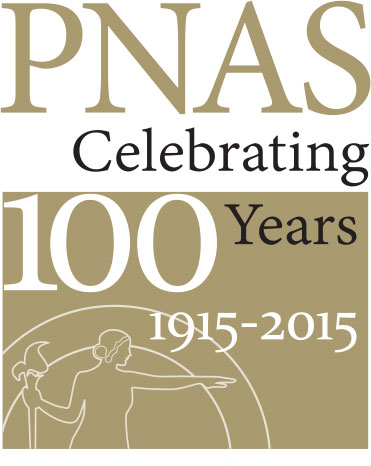
August 25, 2015
The year 2015 marks the 100th anniversary of the Proceedings of the National Academy of Sciences (PNAS). Beginning with the first issue in January 1915, PNAS continues to publish articles across all scientific disciplines. The journal is recognized worldwide for the breadth of its content and the wealth of articles that have played a key role in the development of science by providing important scientific discoveries and by promoting discussion across disparate fields. PNAS is highlighting this rich content throughout its anniversary year.
We invite you to join the centenary celebration through 100th Anniversary Commentaries, short articles that discuss landmark PNAS papers from the archives and place them into today’s context. When possible, Commentary authors are chosen who had direct experience with the discoveries. We began the celebration by commemorating the establishment of PNAS in 1914 by publishing the first 100th Anniversary Commentary in 2014. “The RNA code: Nature’s Rosetta stone” features the classic paper by Nirenberg and Matthaei that uncovered the first letters of the genetic code. The commentary is written by Thomas Caskey and Phil Leder, at the time postdoctoral fellows at NIH who worked in Nirenberg’s laboratory and helped complete the breaking of the genetic code in subsequent papers, many of them published in PNAS.
PNAS 100th Anniversary content also includes longer articles, 100th Anniversary Perspectives, that provide in-depth discussion and explore contemporary problems made possible by the pioneering papers that appeared in the pages of PNAS. The first of the 100th Anniversary Perspectives is titled “Identifying strains that contribute to complex diseases through the study of microbial inheritance,” and is written by Jeffrey Gordon and colleagues. The Perspective begins with the paper by Woese and Fox that identified archaea, but primarily deals with further developing the tools and concepts that this classic paper brought to light.
The landmark PNAS articles featured for the 100th Anniversary are republished in a modern format to be more accessible. As companions and to help explain the 100th Anniversary Commentaries and Perspectives authored by scientists, shorter pieces written by science writers in the 100th Anniversary Front Matter section will develop one particular theme arising from the landmark articles and in layman’s terms makes the discoveries more immediate. The 100th Anniversary Timeline depicts the history encompassed in the 100 years of PNAS highlighting world events and developments in science and technology coincident with the publication of the landmark articles PNAS.
Finally, 100th Anniversary Special Features consisting of collections of articles made up primarily of Perspectives will explore topics of contemporary interest, and look to the future of science.
Join us in celebrating the richness of the scientific heritage that arose from the pages of PNAS and look to this portal for new articles and additional features throughout the year.











